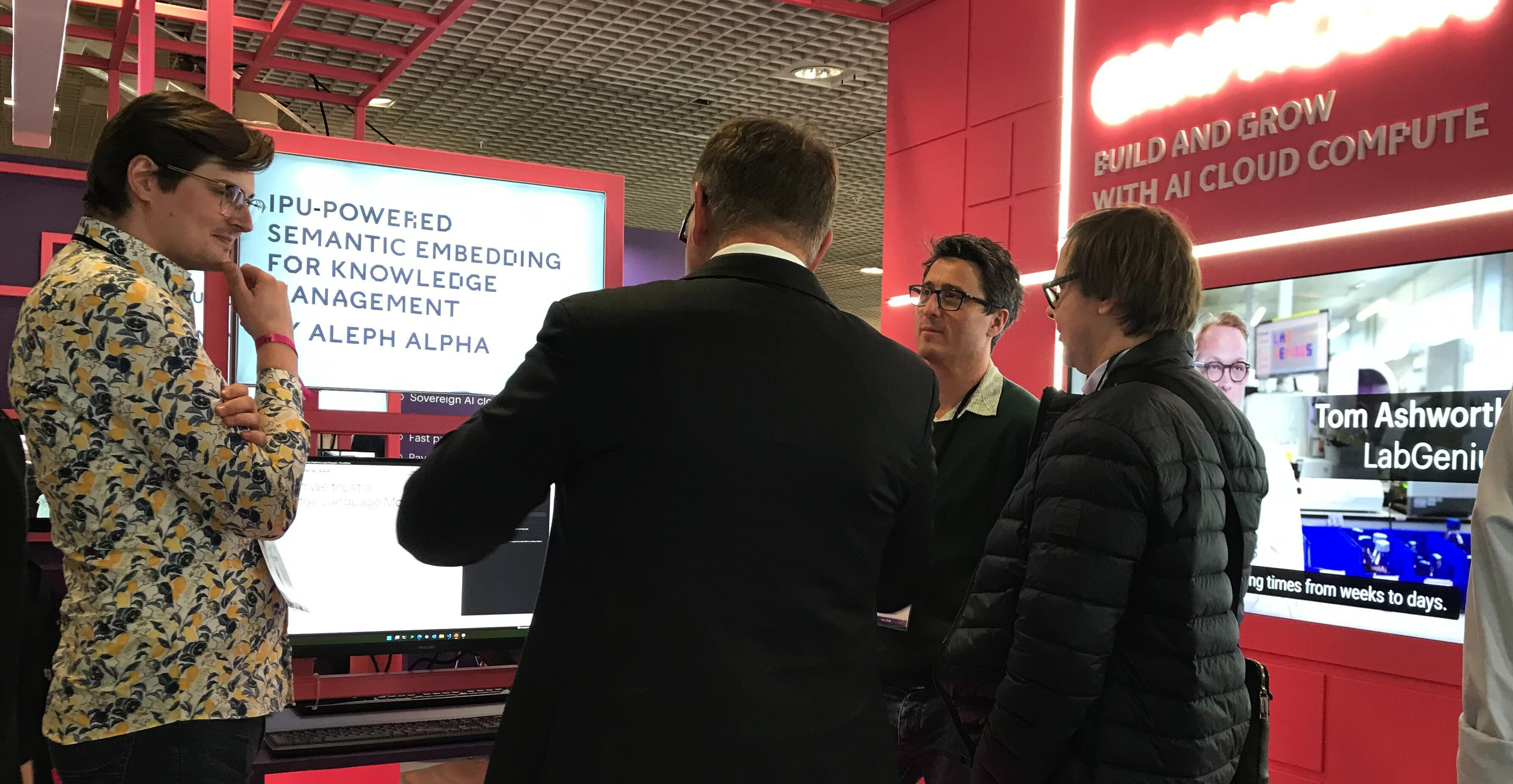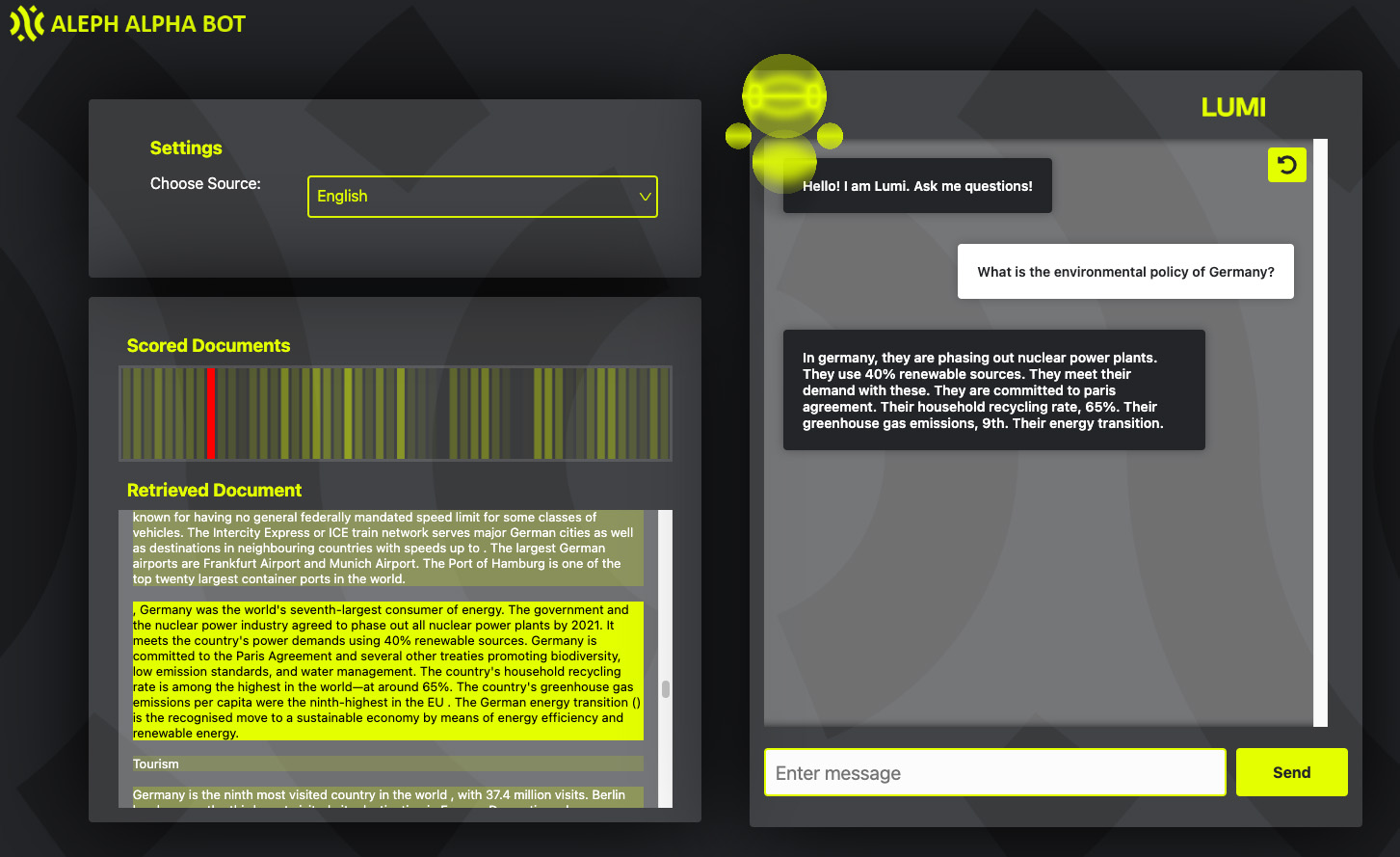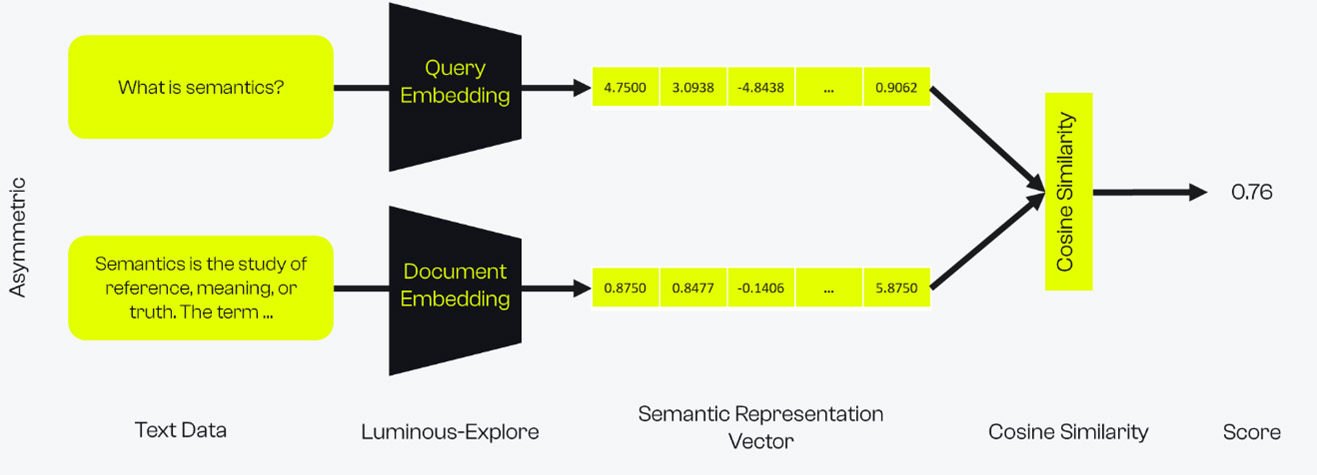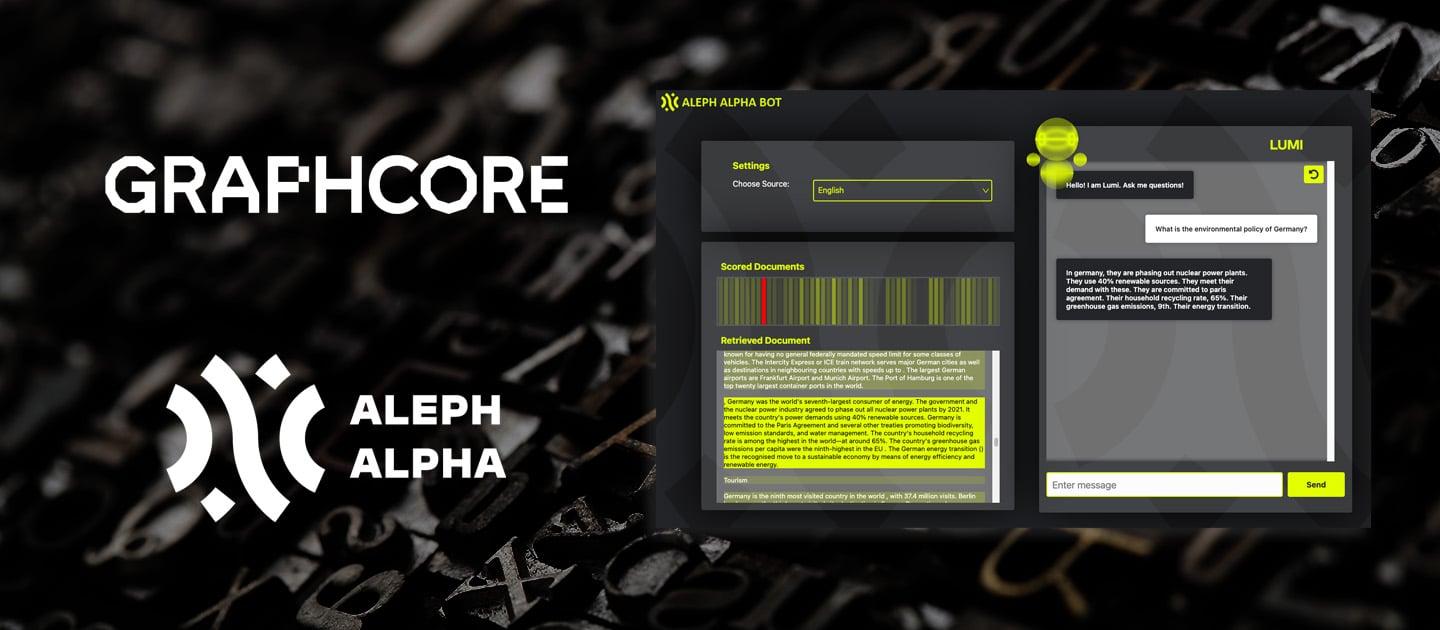Graphcore IPU systems can now be used to carry out bulk semantic embedding using Aleph Alpha’s ground-breaking Luminous-Explore model, further extending the close working relationship between the two leading AI companies.
Turning text-based content into semantic representation vectors is a vital part of building systems – such as semantic search – that are capable of understanding and responding to the meaning behind queries, as opposed to simple keyword recognition.
A version of Aleph Alpha’s Luminous Chatbot - powered by embeddings generated on IPUs – will be on display at the 2023 World AI Festival Cannes, on the Graphcore stand.
The WAICF demo uses a database semantically embedded using IPUs on Gcore Cloud – a Graphcore partner and AI infrastructure provider.
The use of Graphcore systems to carry out semantic embeddings follows last year’s successful implementation of an 80% sparsified version of the Luminous AI Agent, which took advantage of the IPU’s unique architecture to drastically reduce parameter count, required processing power and energy consumption.
Pushing the boundaries
Commenting on the latest work, as well as the ongoing relationship, Jonas Andrulis, Founder and CEO of Aleph Alpha said: “It is truly exciting to see these two great European companies - Graphcore and Aleph Alpha - working together to push the boundaries of what is possible in artificial intelligence.”
“We are unlocking the next level of capability – using our Luminous models on IPU to assist in multilingual and multimodal search and to show the information source for explainability. The result is an AI that human experts can trust when handling sensitive data for a problem at hand."

Holy grail
The use of semantic understanding is often referred to as the ‘holy grail’ of artificial intelligence, allowing automated systems to infer and respond to the intent behind a request, as opposed to specific wording.
A corpus of information is first encoded to turn it into semantic representation vectors – effectively abstracting the language to a numerical representation of the concepts that lie behind it.
Asking a question of a semantic model requires the query to also be encoded to generate a semantic representation vector – which can then be compared with those from the database.
How closely different concepts are related is described by the ‘cosine similarity’ of their semantic representation vectors.

The largest part of the computational work required is assigning vectors to the larger repository of data that form the source of knowledge. It is this process of ‘bulk embedding’ that Graphcore IPUs can now be used to carry out using Luminous-Explore.
For more detail on the development of Aleph Alpha’s Luminous Explore model, see the company’s blog.
Read more about Graphcore’s ongoing relationship with Aleph Alpha, including the development of an 80% sparsified version of the Luminous Chatbot.
